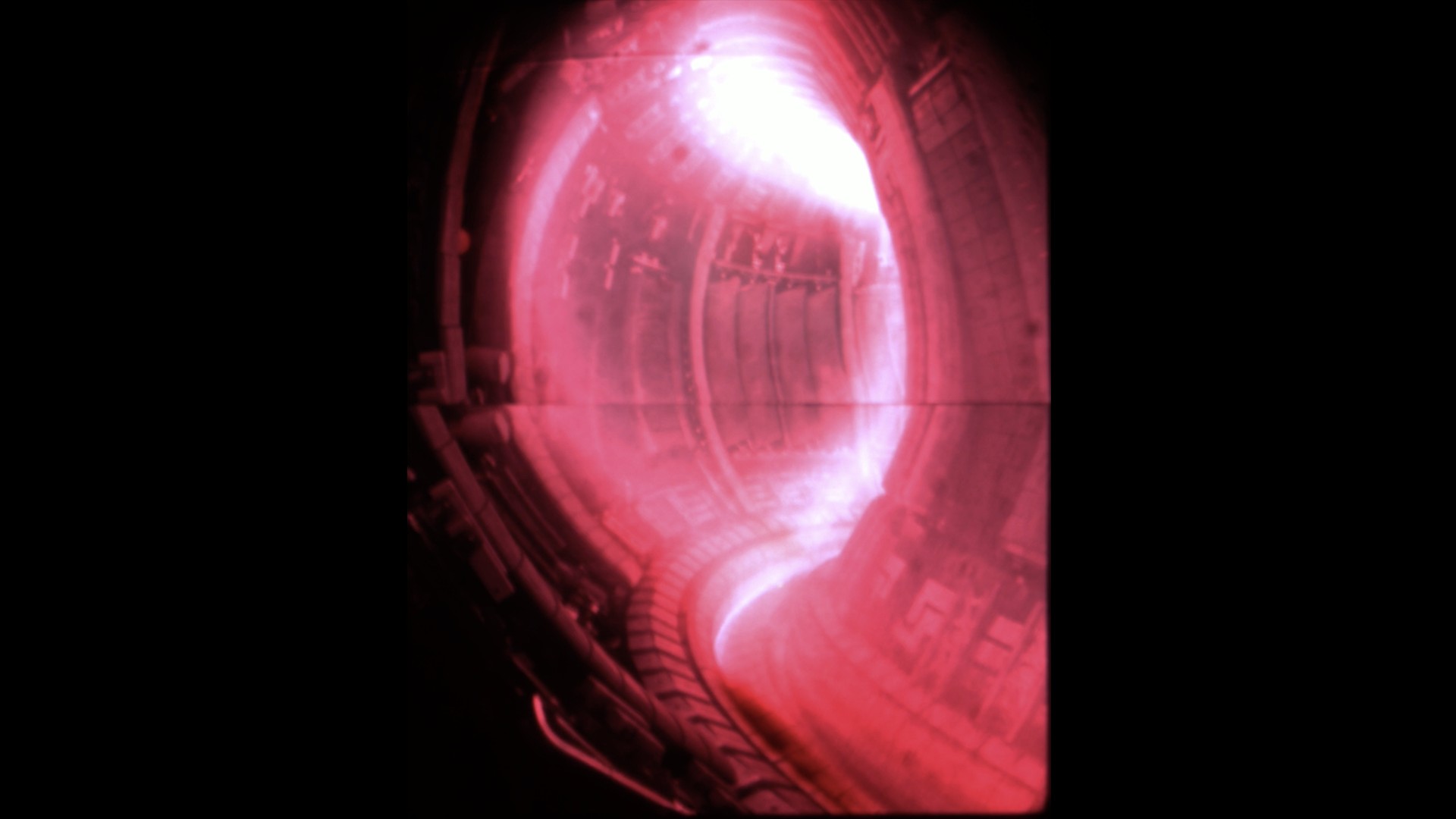The 40-year-old Joint European Torus (JET) facility in the UK is one of the largest and most powerful fusion facilities in the world. In the last major experiment at the facility, researchers have shown that they can reliably generate fusion energy and set a world record for energy production.

JET is a tokamak reactor, a doughnut-shaped structure that uses powerful magnetic fields to contain a 150 million degree hot plasma, the stage a gas reaches when it is heated to extreme temperatures. Such conditions are needed for the fuel's atomic nuclei - the hydrogen isotopes deuterium and tritium - to change from gas to plasma and begin to merge. When the nuclei merge, new helium nuclei are created and enormous amounts of heat are released.
During JET's last deuterium-tritium experiment (DTE3), fusion energy was produced in 5.2 seconds, resulting in a groundbreaking record of 69.26 megajoules, with a fuel quantity of only 0.21 milligrams (the previous record was 59 megajoules of energy with 0.17 mg of fuel). To get the same amount of energy from coal, you would need two kilograms, or 10 million more fuel.
"The record itself is positive, but the big achievement is that it has been possible to reproduce deuterium-tritium plasmas under reactor relevant conditions. It shows that we understand and control the underlying processes, and also means that we have gained new knowledge and data that are absolutely necessary for the work that awaits now - to create larger and more powerful reactors," says Pär Strand, professor at Chalmers, whose research includes analysing the experiments at JET.
Jet paves the way for ITER
These five-second experiments at such extreme temperatures are what the JET experimental reactor is designed to do. And the success in repeating and improving on the record performance of recent years represents a very important milestone in fusion science and technology.
Over 300 scientists and engineers from EUROfusion - a consortium of researchers across Europe, have contributed to the experiments at the UK Atomic Energy Authority (UKAEA) JET facility. Now that JET is being decommissioned, the knowledge gained from it is being incorporated into the work on the larger ITER research facility being completed in the south of France, which in turn is a step on the road to commercial facilities.
"Between the closure of JET and the start of the first experiments at ITER, there is no operating facility in Europe built for deuterium-tritium, the fuel that we see as having the potential to be used in commercial facilities in the long term. But with the last experiments at JET, we have a lot of material to analyse and data we can include in our models, so that we can build on the existing knowledge to ensure that ITER has the very best conditions when it is completed," says Pär Strand.
More info:
Press release from Eurofusion and UK Atomic Energy Authority (UKAEA): Breaking New Ground: JET Tokamak’s Latest Fusion Energy Record Shows Mastery of Fusion Processes
More information about the ITER reactor, currently under construction in Caderache, France.
Contact
- Professor, Astronomy and Plasma Physics, Space, Earth and Environment
